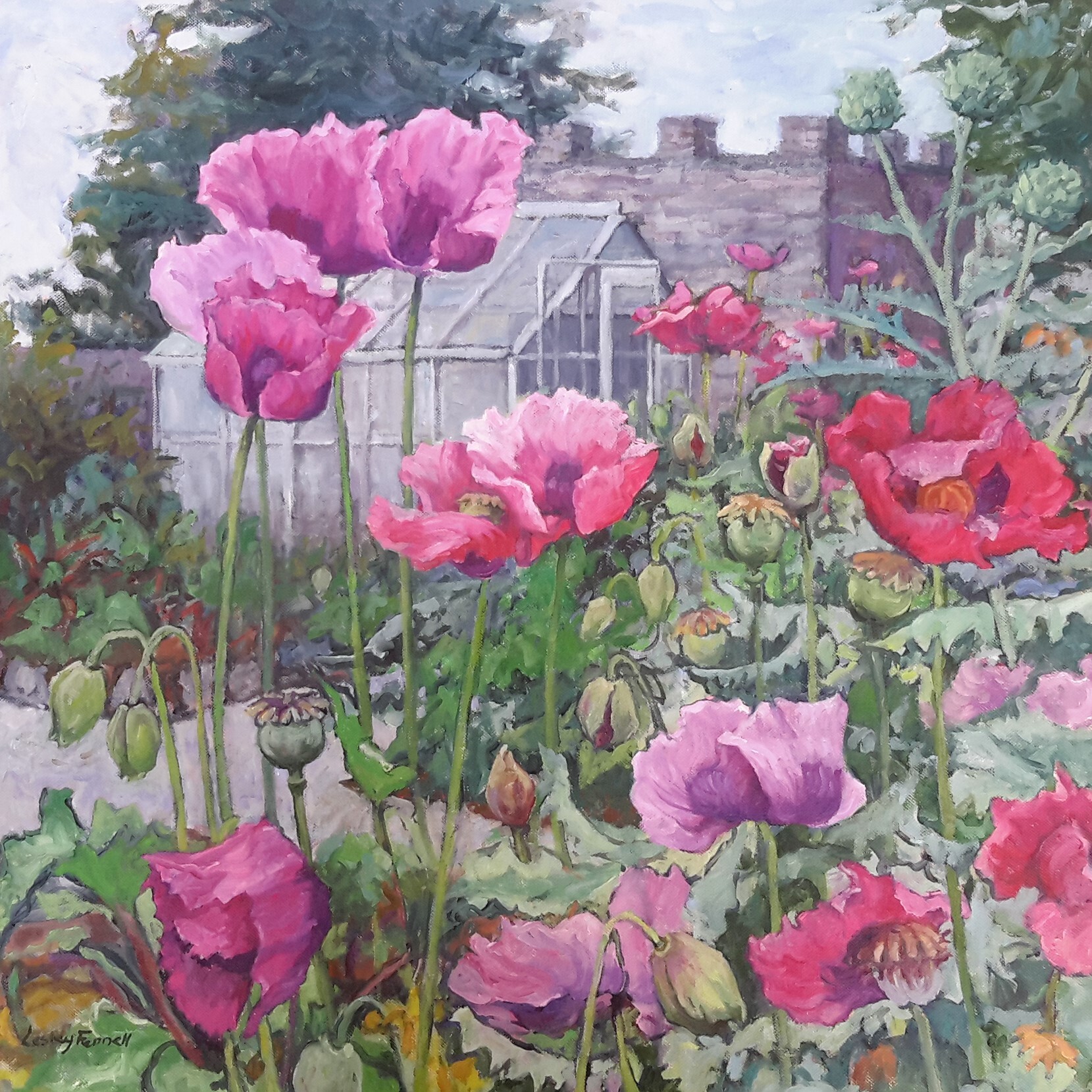Celebrating the Irish Country House Garden
01.04.2021
Posted by IGS

During 2021 and 2022 the Irish Georgian Society is celebrating the Irish Country House Garden with two exhibitions in the City Assembly House that will explore four hundred years of Irish gardens and designed landscapes. The first of these exhibitions, Stepping Through the Gate: Inside Ireland's Walled Gardens, will run from September 2021, while the second, In Harmony with Nature: The Irish Country House Garden, will run from May 2022.
Stepping Through the Gate: Inside Ireland's Walled Gardens (September 2021)

Open Tuesday - Saturday, 10am - 5pm. Last admission 4:30pm.
Walled gardens have a long history going back millennia having often simultaneously served not just as places to grow fruit and vegetables, but also areas of privacy and of protection from intemperate weather conditions.
This exhibition will feature forty specially commissioned paintings of Walled Gardens by four distinguished artists: Lesley Fennell, Andrea Jameson, Maria Levinge and Alison Rosse.
All four artists are active gardeners and are people who understand plants. Alison Rosse and her husband inherited responsibility for one of Ireland’s finest demesnes at Birr Castle which includes superlative walled gardens laid out by his late parents. Lesley Fennell can take credit for creating a truly lovely garden at Burtown, County Kildare. Together with her two sisters, at Tourin, County Waterford, Andrea Jameson ensures that the walled garden remains as productive as ever, while Maria Levinge, having moved house a few years ago, embarked on establishing a new garden in County Wexford.
Paintings in the exhibition will be available for purchase. A catalogue can be purchased from the IGS bookshop.
In Harmony with Nature: The Irish Country House Garden (May 2022)

While the changing landscape of the Irish countryside has been extensively examined in recent decades, the evolution of gardens attached to country houses remains under-investigated.
This exhibition will explore the history of the Irish Country House Garden using paintings, engravings and photographs as well as film and other media creating an exciting, engaging and informative experience.
It will open c.1600 with sites around castles and fortified houses such as those at Lismore, County Waterford and Portumna, County Galway, and it will end with two great island gardens created just before the First World War: Garnish, County Kerry and Lambay, County Dublin.
The exhibition will consider what makes our gardens different from those found in other countries. What plants were favoured during which eras? Who were the most significant plantsmen and women? What role did owners play in laying out a garden? Who were the most important gardeners? What new species were introduced to Ireland, especially in the 19th century.
Dates may change subject to government guidelines.
To coincide with these exhibitions the Irish Georgian Society is publishing a book to be edited by Professor Finola O’Kane-Crimmins with contributions from leading experts in the field. In addition, a television documentary looking at the history of the Irish country house garden is being produced in association with RTE and the OPW, while a conference is planned for the autumn.
Over the course of the year, a series of online interviews will be available with Robert O'Byrne, curator of both exhibitions, talking with people who are passionate about Irish gardens. The first series of talks started in January and features interviews with the four artists whose work features in the Walled Gardens exhibition. These will be re-issued in May and followed by a series of interviews with leading Irish gardeners.
The Irish Georgian Society is most grateful to Susan Burke and her late husband Coley who were the inspiration for these exhibitions and who provided generous funding to bring them to fruition. We also wish to thank the Apollo Foundation, Northern Trust Corporation, Beth Dater, Sheila O’Malley Fuchs, Hindman Auctions, Fred and Kay Krehbiel, Jay & Silvia Krehbiel, Frank Saul, John & Nonie Sullivan, Robert & Gloria Turner, and The Heritage Council.

